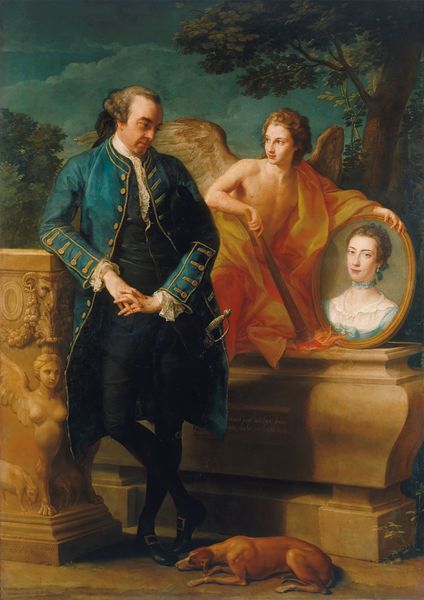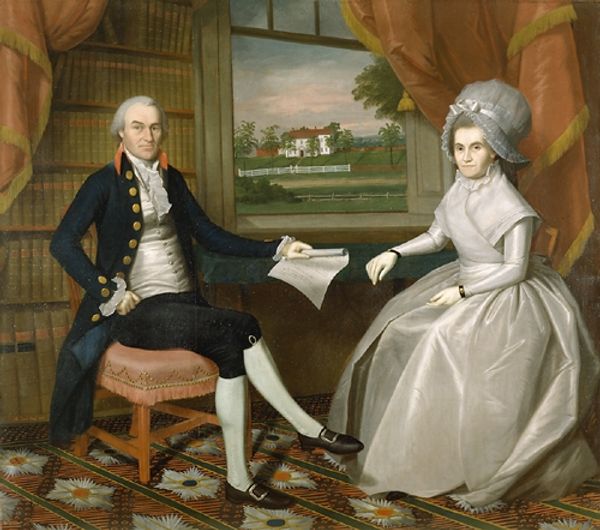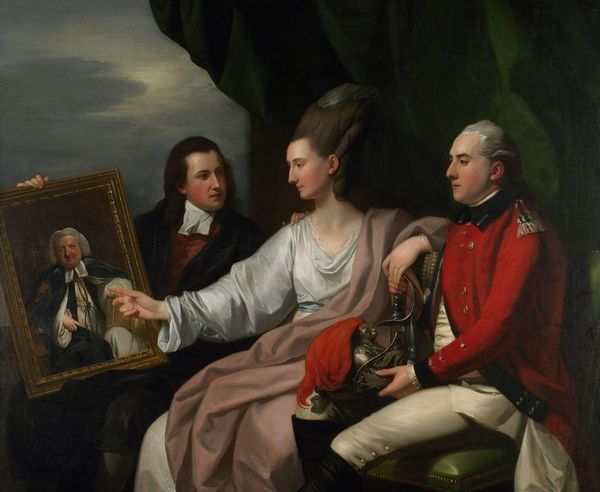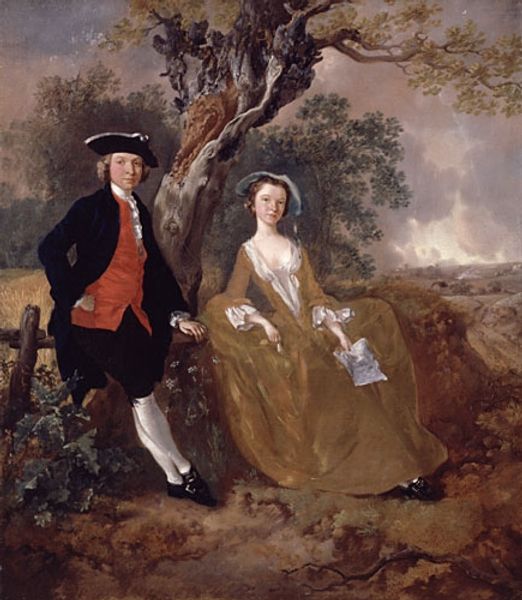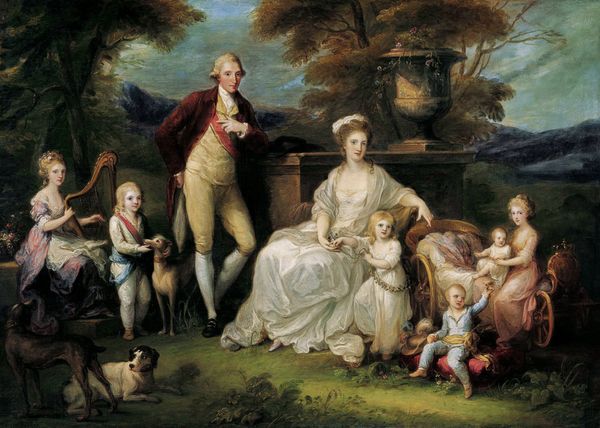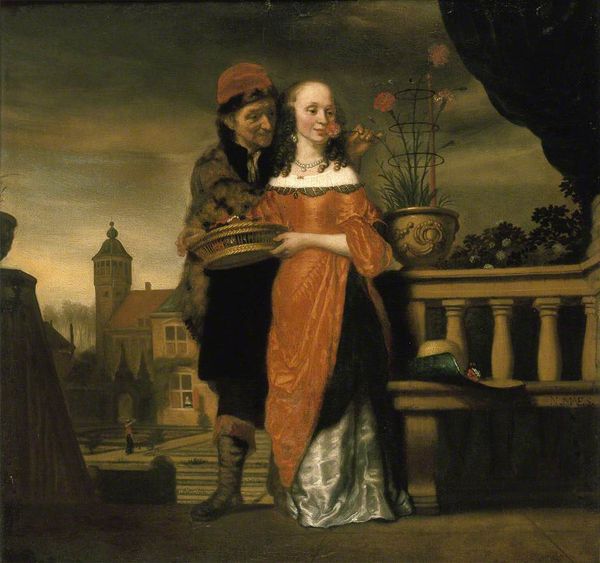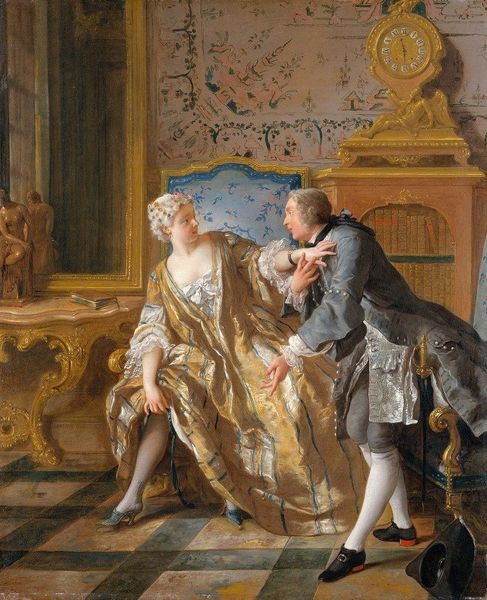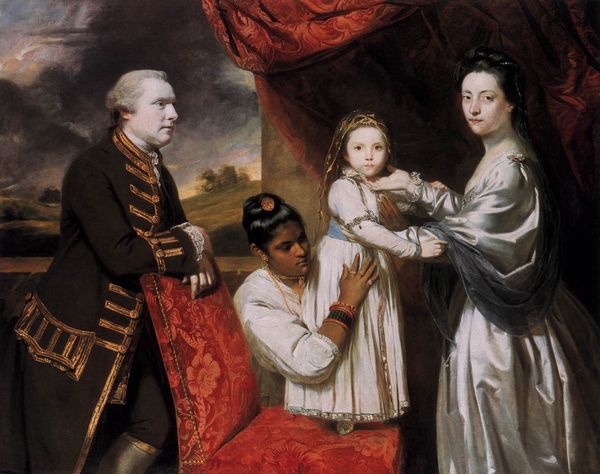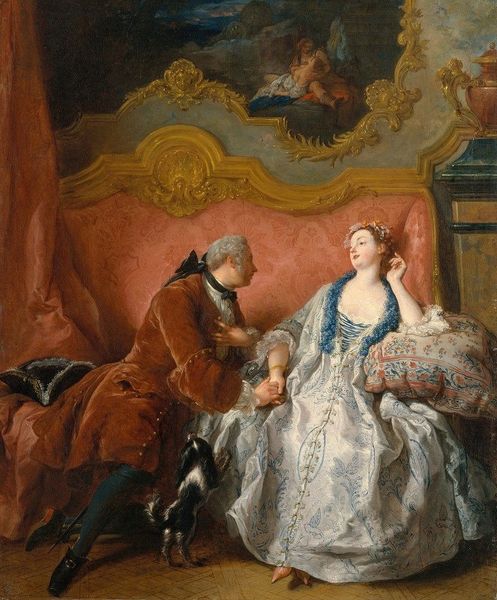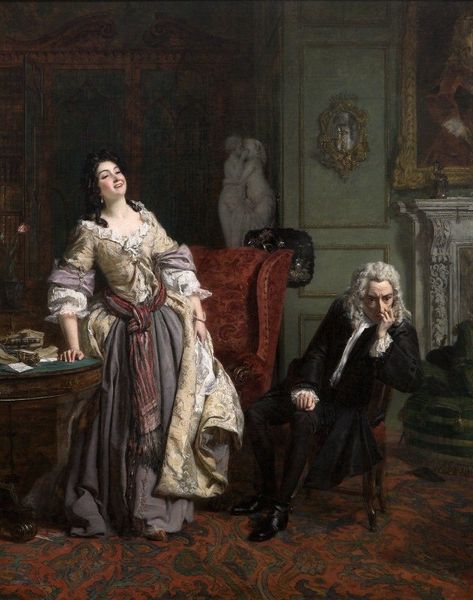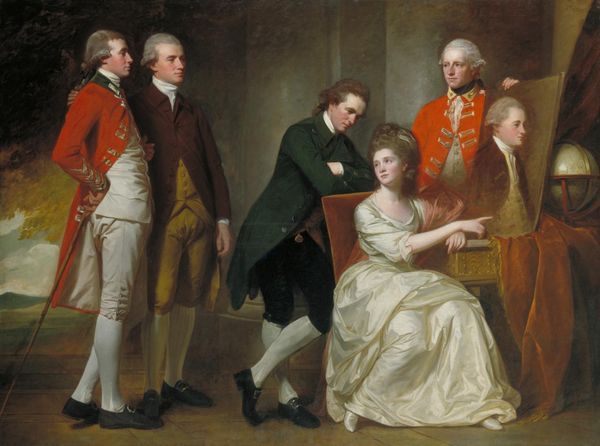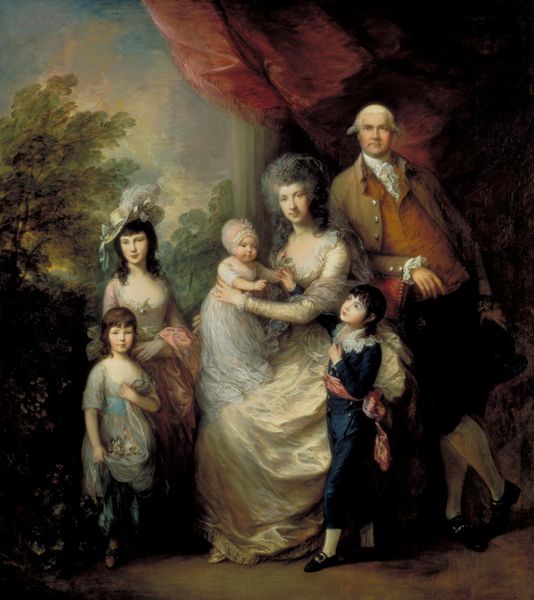
oil-paint
#
portrait
#
neoclacissism
#
oil-paint
#
oil painting
#
history-painting
Dimensions: 223.52 x 174.62 cm
Copyright: Public domain
Editor: Here we have John Singleton Copley's "Mr. and Mrs. Ralph Izard" from 1775, rendered in oil. I'm immediately struck by how staged it feels. Almost like they’re posing for posterity amidst a carefully curated collection of wealth. What is your perspective on it? Curator: Well, consider the materials themselves. Oil paint, imported pigments, fine linen canvas—all products of extensive global trade networks. The Izards are literally sitting amidst the fruits of colonial labor. Notice the mahogany table, likely sourced from the Americas, elaborately carved and undoubtedly employing skilled craftsmen. Editor: That's interesting. I was focusing on the symbolism of the classical elements - the Roman statues and architecture in the background suggesting education and refinement. Curator: And who *crafted* those statues? Think about the disparity between the subject and the unacknowledged labour. The marble itself was quarried and transported; artisans shaped it according to Neoclassical ideals that mirrored the taste of the elite class and the demand to legitimize the empire. Are those ideals inherently separate from those that profit from them? Editor: So you're saying that the painting itself, the object, is evidence of the economic and social systems at play, more so than the intended message? Curator: Precisely! Copley's brushstrokes and material choices are intertwined with the production and consumption patterns of his time. What can we glean from the Izard's clothing – silks, lace, finely woven wool? These are all markers of economic status that depend on textile production. They serve both to create this idea of beauty, but come at a price in labor across many social levels. Editor: I hadn't considered analyzing it quite like that. Thank you! Curator: Of course! It's always about looking beyond the surface to understand how the material world informs our understanding of history and society.
Comments
No comments
Be the first to comment and join the conversation on the ultimate creative platform.
